 Open Access
Open Access
ARTICLE
Deep Learning Based Face Mask Detection in Religious Mass Gathering During COVID-19 Pandemic
1 Information Systems Department, Faculty of Computing and Information Technology King Abdulaziz University, Jeddah, 21589, Saudi Arabia
2 Information Systems Department, HECI School, Dar Alhekma University, Jeddah, Saudi Arabia
3 Center of Excellence in Smart Environment Research, King Abdulaziz University, Jeddah, 21589, Saudi Arabia
4 Department of Computer Science, Faculty of Computing and Information Technology, King Abdulaziz University, Jeddah, 21589, Saudi Arabia
5 Information Technology Department, Faculty of Computing and Information Technology, King Abdulaziz University, Jeddah, 21589, Saudi Arabia
6 Department of Mathematics, Faculty of Science, Al-Azhar University, Naser City, Cairo, 11884, Egypt
* Corresponding Author: Mahmoud Ragab. Email:
Computer Systems Science and Engineering 2023, 46(2), 1863-1877. https://doi.org/10.32604/csse.2023.035869
Received 07 September 2022; Accepted 08 December 2022; Issue published 09 February 2023
Abstract
Notwithstanding the religious intention of billions of devotees, the religious mass gathering increased major public health concerns since it likely became a huge super spreading event for the severe acute respiratory syndrome coronavirus 2 (SARS-CoV-2). Most attendees ignored preventive measures, namely maintaining physical distance, practising hand hygiene, and wearing facemasks. Wearing a face mask in public areas protects people from spreading COVID-19. Artificial intelligence (AI) based on deep learning (DL) and machine learning (ML) could assist in fighting covid-19 in several ways. This study introduces a new deep learning-based Face Mask Detection in Religious Mass Gathering (DLFMD-RMG) technique during the COVID-19 pandemic. The DLFMD-RMG technique focuses mainly on detecting face masks in a religious mass gathering. To accomplish this, the presented DLFMD-RMG technique undergoes two pre-processing levels: Bilateral Filtering (BF) and Contrast Enhancement. For face detection, the DLFMD-RMG technique uses YOLOv5 with a ResNet-50 detector. In addition, the face detection performance can be improved by the seeker optimization algorithm (SOA) for tuning the hyperparameter of the ResNet-50 module, showing the novelty of the work. At last, the faces with and without masks are classified using the Fuzzy Neural Network (FNN) model. The stimulation study of the DLFMD-RMG algorithm is examined on a benchmark dataset. The results highlighted the remarkable performance of the DLFMD-RMG model algorithm in other recent approaches.Keywords
Religious events involving the gathering of an enormous number of practitioners of the religion are significant ritualized features. A massive gathering event (MGE) can be no exception, an assembly of many people attending an organized event within a definite space [1]. There exist large public health consequences of MGE. Public health concerns during those events could encompass a range of health problems: spreading food, air, and water, exacerbating non-communicable diseases, vector-borne infectious disease, accidents, health consequences of alcohol and substance abuse, stampedes, and worsening of mental health problems [2]. The mass gathering is considered by the concentration of people at a particular place for a particular goal over a key planning recommendation for mass gathering during COVID19: Interim guidance-2-set time that can potentially strain the response and planning resources of the host community or country.
The mass gathering occurs as a single event or a grouping of numerous events at diverse places [3]. They might be private or public, spontaneous or planned, one-off or recurrent, and of different times and sizes. The range of mass gatherings is wider, from music, sports, religious, entertainment, or business events, to huge meetings and conferences. Some health interferences, like mass drug administrations or immunization campaigns, are considered mass gatherings [4]. The mass gathering includes high-visibility events, frequently related to international travel, great participation, extended media coverage, prolonged duration, and many venues (multiple host countries). Also, high-visibility events are often related to the improved frequency of small private gatherings (at home, in streets, restaurants or bars, etc.), which could characterize further difficulty since they are less controlled [5]. During the COVID19 pandemic, mass gatherings could be closely related to the high risk of spreading SARS-CoV-2; also, they can potentially strain the response and planning resources of the host community or country and be related to destructive effects on health services [6].
Organizing crowded event frequently includes complicated tasks, however, organizing them during pandemics or ongoing crises, namely COVID19 which needs adherence to numerous constraints, is increasingly sophisticated [7]. Also, many out-of-control crowded events exist with or without the participation of regulatory bodies (government of the region or country). Besides washing hands frequently and maintaining physical distancing, the appropriate usage of facemasks has now developed as the pillar to preventing community transmission of the disease [8]. The purpose is to protect oneself from getting infected and spreading the virus. Now, policymaker faces several risks and challenges while facing the transmission and spreading of COVID19. The laws and rules emerged as an action to considerably expand cases and deaths in several regions [9,10]. But monitoring massive groups of people has become increasingly complex.
This study introduces a new Deep Learning Based Face Mask Detection in Religious Mass Gathering (DLFMD-RMG) technique during the COVID-19 pandemic. The DLFMD-RMG technique focuses mainly on detecting face masks in religious mass gatherings. To accomplish this, the presented DLFMD-RMG technique undergoes two pre-processing levels: Bilateral Filtering (BF) and Contrast Enhancement. For face detection, the DLFMD-RMG technique uses YOLOv5 with a ResNet-50 detector. In addition, the face detection performance can be improved by the seeker optimization algorithm (SOA) for tuning the hyperparameter of the ResNet-50 model. At last, the faces with and without masks are classified using the Fuzzy Neural Network (FNN) model. The stimulation study of the DLFMD-RMG model is examined on benchmark datasets.
In [11], a single shot multibox detector and MobileNetV2 (SSDMNV2) proposed for the detection of face masks utilizing MobileNetV2, TensorFlow, Keras, and OpenCV Deep Neural Network (DNN) structure are utilized as image classification. OpenCV DNN employed in SSDMNV2 has SSD, including ResNet-10, as the backbone and can identify faces from many angles. While MobileNetV2 offers lightweight and precise estimations for classification. In [12], a hybrid method utilizing deep and traditional ML for face mask detection is presented. This presented technique method has 2 elements, namely classification and feature extraction.
Gupta et al. [13] introduce a mask detector that utilizes an ML facial classification mechanism to determine whether the mask is worn. It is linked to a closed-circuit television (CCTV) mechanism verifying that only individuals wearing masks are allowable. Asif et al. [14] propose automatically utilizing DL to identify face masks in the video. The presented structure has 2 elements. Initially, it is devised to track and detect faces through ML and OpenCV; then, facial frames are processed into modelled deep transfer learning (DTL) MobileNetV2 to identify the mask region. In [15], an IoT-based smart door utilizes an ML technique for detecting face masks and monitoring body temperature. This method is utilized in apartment entrances, shopping malls, hotels, etc.
Loey et al. [16] intend to localize and annotate the face mask object in real-time images. Wearing a face mask in public places would protect individuals from the spread of transmission among them. The presented method has 2 elements. The first element was devised for the feature-extracting process related to the ResNet50 DTL method. At the same time, the second element was devised for detecting face masks related to YOLO v2. Singh et al. [17] suggest a method that would draw bounding boxes (green or red) around the faces of individuals, whether an individual was wearing a mask or not. The authors have also associated the performance of both methods: inference time and precision rate.
In this study, new DLFMD-RMG technology has been developed. The DLFMD-RMG technique focuses mainly on detecting face masks in religious mass gatherings. The DLFMD-RMG technique undergoes two pre-processing levels: the BF technique and Contrast Enhancement. Then, it involves two processes: face detection and face mask classification. Fig. 1 defines the overall flow of the DLFMD-RMG system.
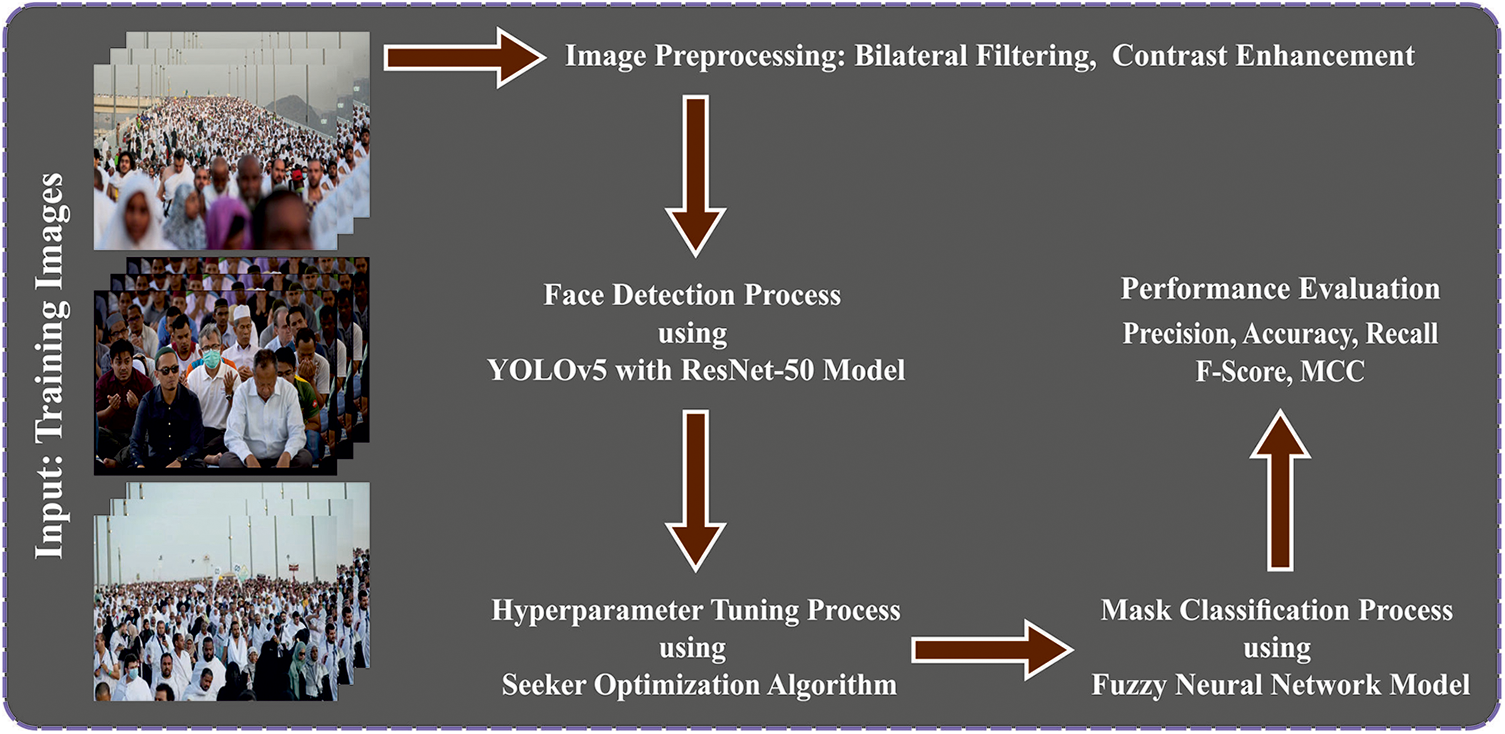
Figure 1: Overall process of DLFMD-RMG approach
For face detection, the DLFMD-RMG technique uses YOLOv5 with a ResNet-50 detector. YOLO is a novel target detection technique with higher accuracy and faster detection. The base YOLO model process image is at forty-five frames every second [18]. The YOLO network has 2 FC layers and twenty-four convolution layers. Interchanging 1 × 1 convolution layers reduces the feature space from previous layers. YOLO could pre-train the convolution layer on ImageNet classifier tasks at half the resolution (224 × 224 input image) and doubles the resolution for recognition. Several YOLO versions were generated. The YOLO v3 approach involves three techniques: YOLO v3-SPP, YOLO v3, and YOLO v3-tiny; the YOLO v4 approach involves four techniques: YOLO v4m-mish, YOLO v4s-mish, YOLO v4x-mish, and YOLO v4l-mish; YOLO v5 architecture involves YOLO v5s, YOLO v5n, YOLO v5x, and YOLO v5l.
The study chooses the YOLO v4s-mish, YOLO v5s, and YOLO v3 approaches for the study. The major reason is: firstly, the three modules could produce a test outcomes graph with a similar indicator that is appropriate for analysis and comparison; next, the three methods are light weighted, appropriate for target recognition in smaller scenes and smaller and medium datasets; Then, the 3 approaches depend on PyTorch DL architecture proposed by Facebook, and have better outcomes in target recognition.
The detection network is a convolution neural network (CNN) that encompasses output, transform, and convolution layers. The transform layer extracts activation of the convolution layer and increases the stability of the DNN. The location of pure bounding boxes can be generated using the output layer.
In this work, ResNet50 is employed as a deep transfer mechanism for extracting features [19]. A ResNet is a type of DTL that uses the residual network. ResNet50 has sixteen residual bottleneck blocks; every block has a convolutional size of
The coefficient for computing the localization loss includes the grid cells’ height (h) and width (w), which is given below.
From the expression,
In Eq. (3),
In Eq. (4),
In addition, the face detection performance can be improved by the SOA for the hyperparameter tuning of the ResNet-50 model. The SOA performs extensive analysis of human search behaviours [20]. Through “experience gradient”, the search direction has been determined, and uncertain reasoning is used to solve the search step measurement.
The SOA has three major updating steps. Here, i refers to
The forward direction of a search can be determined using the experience gradient attained from the individual movement and the assessment of other individuals searching previous locations. The pre-emptive direction
The searcher uses a random weighted average to attain the search direction.
In Eq. (6),
SOA describes the reasoning of fuzzy approximation capability. Through computer language, natural human language stimulates the behaviors of human intelligence. When the algorithm expressed fuzzy rules, it adapted to a better estimate of the optimization problem. But the smallest fitness corresponds to the smallest search step length.
In Eq. (7),
From the expression,
In Eq. (10),
Now,
After attaining the scout step measurement and direction, the position update is denoted as
The SOA algorithm derives a fitness function from accomplishing better classification performance. It describes a positive integer to characterize the improved candidate solution performance. The reduction of the classification error rate is regarded as the fitness function in the following.
3.2 Face Mask Classification Model
In this study, the faces with and without masks are classified using the FNN model. NN is an effective and dynamic approach to understanding supervised learning [21]. The FNN includes output, input, rule, and membership function (MF) layers. Fig. 2 represents the framework of FNN. The dimensional of the input vector signifies the count of neurons from the input layer
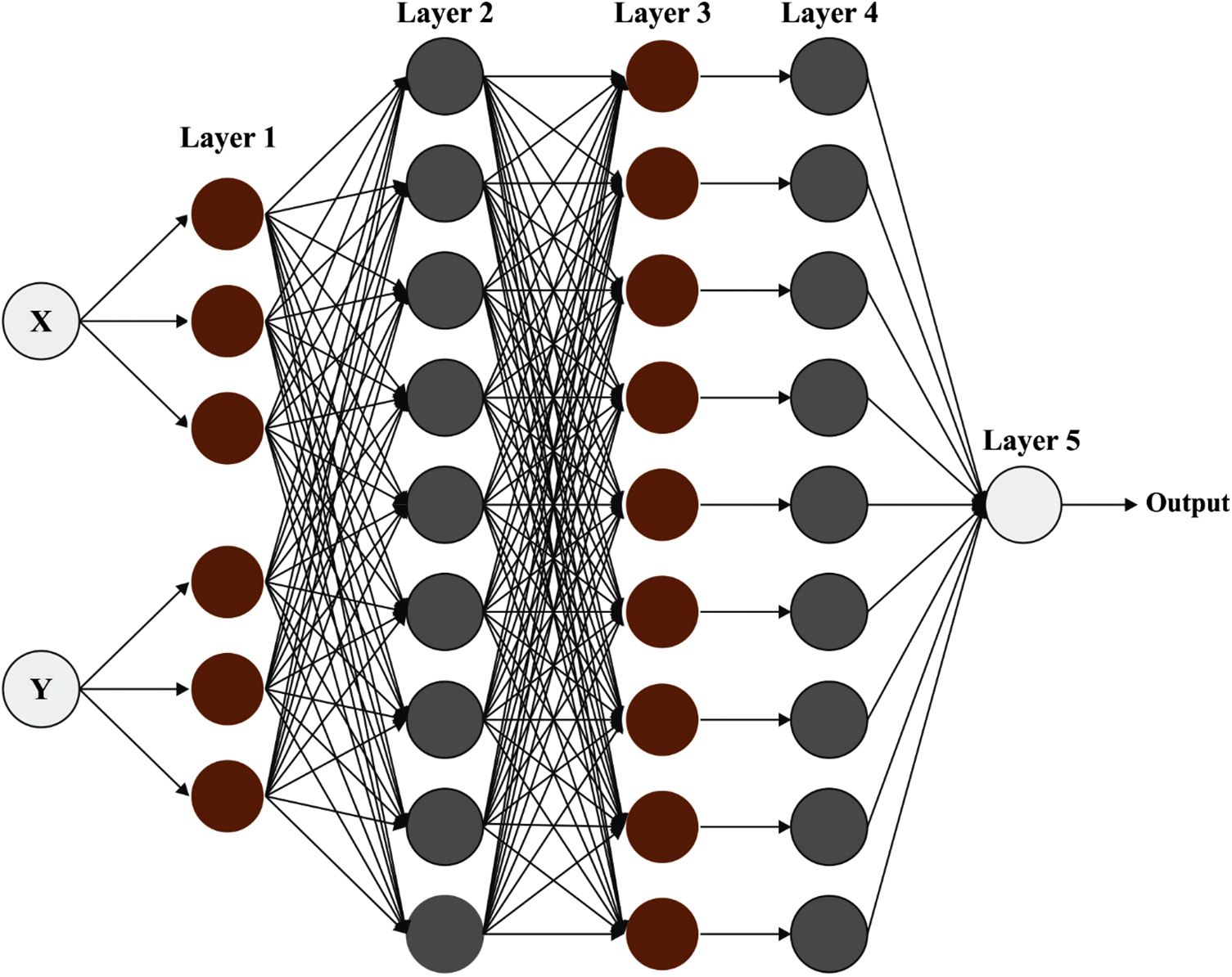
Figure 2: Structure of FNN
The MF
At this point,
At this point,
The face mask detection results of the DLFMD-RMG model are investigated using the dataset [22] comprising 1000 images described in Table 1. Fig. 3 illustrates some sample images with and without masks. The proposed model is simulated using Python 3.6.5 tool. The proposed model experiments on PC i5-8600k, GeForce 1050Ti 4 GB, 16 GB RAM, 250 GB SSD, and 1 TB HDD. The parameter settings are learning rate: 0.01, dropout: 0.5, batch size: 5, epoch count: 50, and activation: ReLU.


Figure 3: Sample images
The confusion matrices accomplished by the DLFMD-RMG model on the identification of face masks on mass gathering in Fig. 4. The figures represented that the DLFMD-RMG model has categorized face mask images appropriately.

Figure 4: Confusion matrices of DLFMD-RMG approach (a) 80% of TR dataset, (b) 20% of TS data, (c) 70% of TR data, and (d) 30% of TS data
Table 2 offers face mask recognition outcomes of the DLFMD-RMG technique on 80% of training (TR) datasets and 20% testing (TS) data. Fig. 5 exhibits the quick face mask recognition results of the DLFMD-RMG system on 80% of the TR dataset. The DLFMD-RMG model has recognized images ‘with mask’ by


Figure 5: Face mask recognition result of DLFMD-RMG approach under 80% of TR dataset
Fig. 6 shows a brief face mask detection outcome of the DLFMD-RMG method on 20% of TS data. The DLFMD-RMG method has identified images ‘with mask’ by
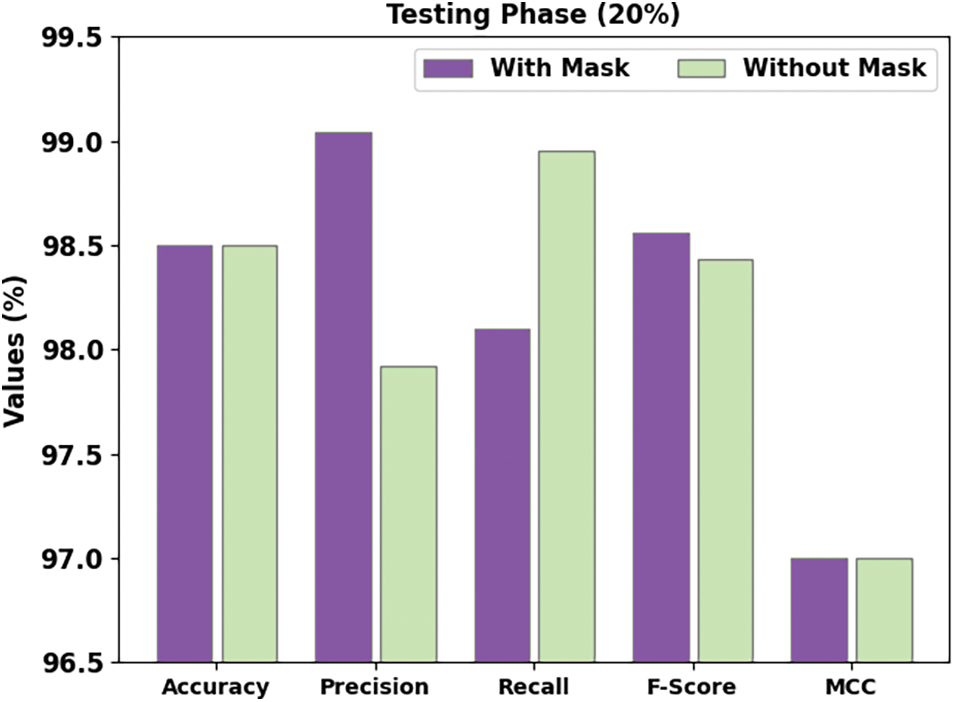
Figure 6: Face mask recognition result of DLFMD-RMG approach under 20% of TS dataset
Table 3 offers face mask recognition outcomes of the DLFMD-RMG system on 70% of TR and 30% of TS datasets. Fig. 7 shows a brief face mask detection outcome of the DLFMD-RMG system on 70% of TR data. The DLFMD-RMG system has identified images ‘with mask’ by

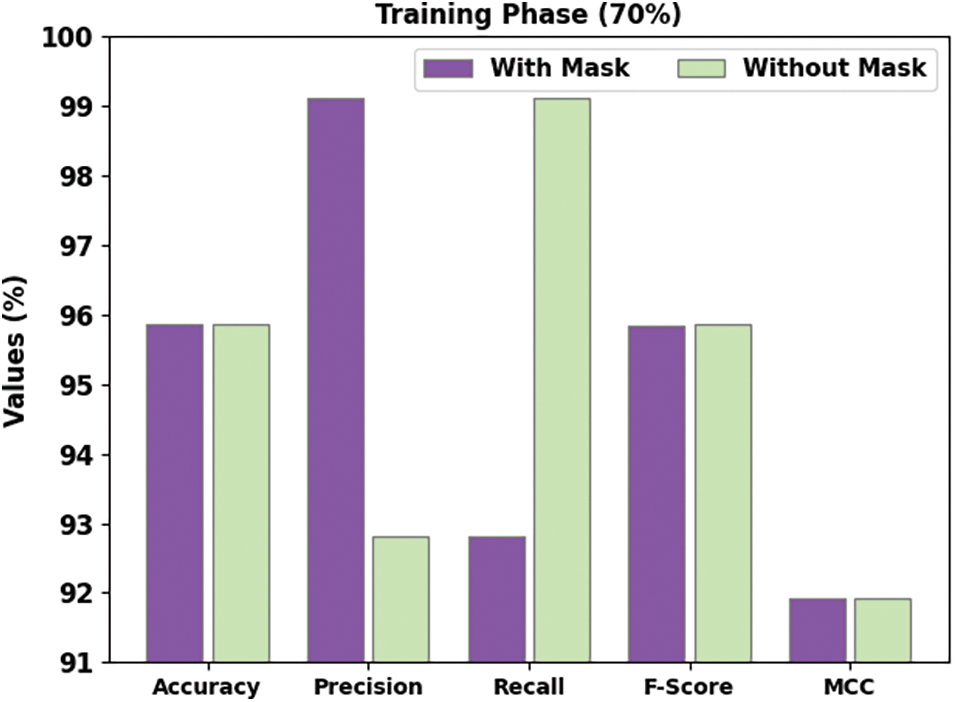
Figure 7: Face mask recognition result of DLFMD-RMG approach under 70% of TR dataset
Fig. 8 demonstrates a brief face mask detection outcome of the DLFMD-RMG system on 30% of TS data. The DLFMD-RMG method has identified images ‘with mask’ by
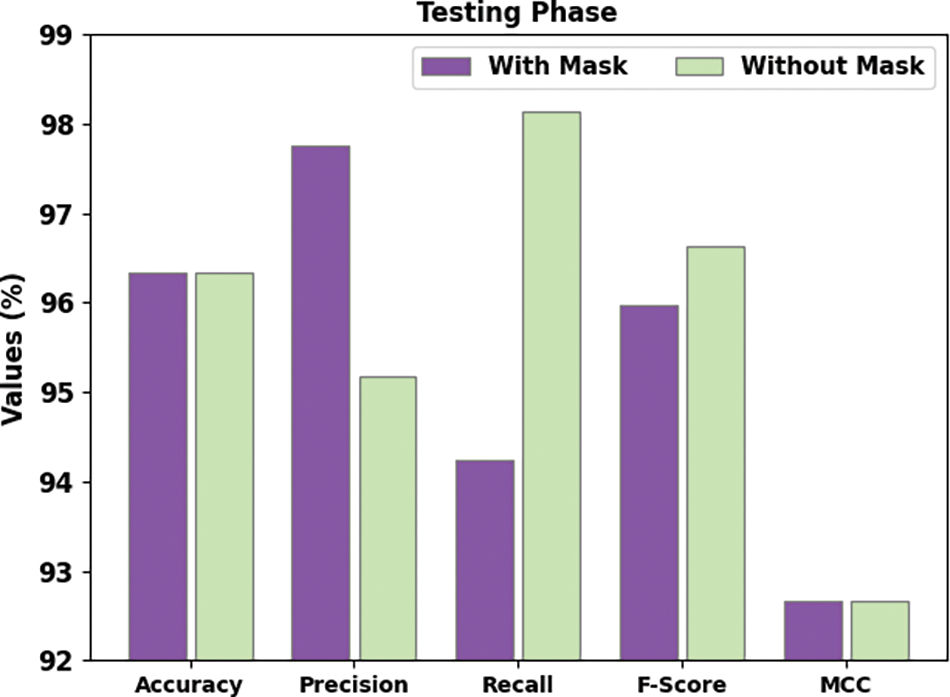
Figure 8: Face mask recognition result of DLFMD-RMG approach under 30% of TS dataset
A brief ROC investigation of the DLFMD-RMG method under the test database is illustrated in Fig. 9. The results indicated the DLFMD-RMG system had shown its capacity to classify different classes.
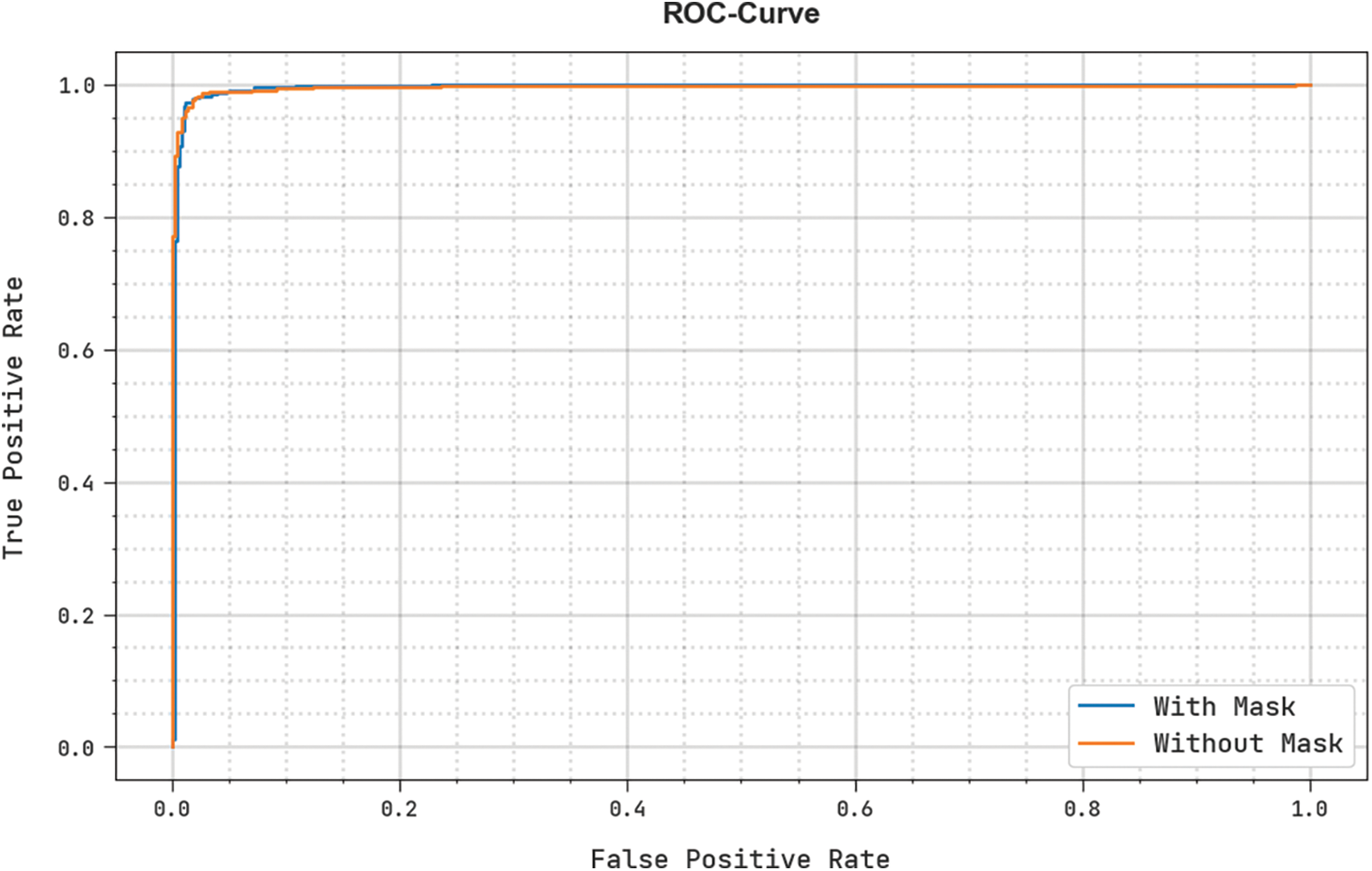
Figure 9: ROC curve analysis of the DLFMD-RMG model
Eventually, a comparative study of the DLFMD-RMG with recent approaches is given in Table 4 and Fig. 10 [12,16,23]. These results inferred that the DLFMD-RMG model had shown enhanced outcomes over other models. For instance, based on

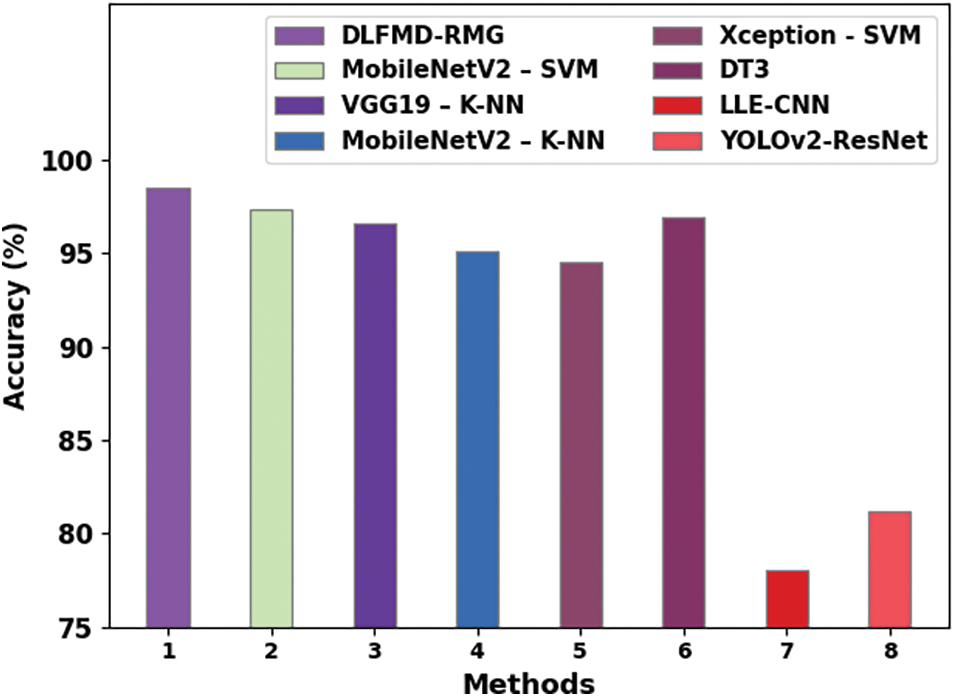
Figure 10: Comparative analysis of DLFMD-RMG system with recent methodologies
In this study, new DLFMD-RMG technology has been developed. The DLFMD-RMG technique focuses mainly on detecting face masks in religious mass gatherings. To accomplish this, the presented DLFMD-RMG technique undergoes two levels of pre-processing: BF technique and Contrast Enhancement. For face detection, the DLFMD-RMG technique uses YOLOv5 with a ResNet-50 detector. In addition, the face detection performance can be improved by the SOA for tuning the hyperparameter of the ResNet-50 model. At last, the faces with and without masks are classified using the FNN model. The experimental validation of the DLFMD-RMG algorithm is examined on a benchmark dataset, and the results highlight the promising performance of the DLFMD-RMG technique over other recent approaches. Ensemble deep learning models can be employed for improved face mask recognition results. Besides, a hybrid metaheuristic algorithm can be designed to enhance classification performance.
Funding Statement: This work was funded by the Deanship of Scientific Research (DSR), King Abdulaziz University (KAU), Jeddah, Saudi Arabia, under grant no. (HO: 023-611-1443). The authors, therefore, gratefully acknowledge DSR technical and financial support.
Conflicts of Interest: The authors declare they have no conflicts of interest to report regarding the present study.
References
1. M. Razavi, H. Alikhani, V. faza, B. Sadeghi and E. Alikhani, “An automatic system to monitor the physical distance and face mask wearing of construction workers in COVID-19 pandemic,” SN Computer Science, vol. 3, no. 1, pp. 1–8, 2022. [Google Scholar]
2. S. Hussain, Y. Yu, M. Ayoub, A. Khan, R. Rehman et al., “IoT and deep learning based approach for rapid screening and face mask detection for infection spread control of COVID-19,” Applied Sciences, vol. 11, no. 8, pp. 3495, 2021. [Google Scholar]
3. C. J. Worby and H. H. Chang, “Face mask use in the general population and optimal resource allocation during the COVID-19 pandemic,” Nature Communications, vol. 11, no. 1, pp. 1–9, 2020. [Google Scholar]
4. H. Farman, T. Khan, Z. Khan, S. Habib, M. Islam et al., “Real-time face mask detection to ensure covid-19 precautionary measures in the developing countries,” Applied Sciences, vol. 12, no. 8, pp. 3879, 2022. [Google Scholar]
5. J. S. Talahua, J. Buele, P. Calvopiña and J. Varela-Aldás, “Facial recognition system for people with and without face mask in times of the covid-19 pandemic,” Sustainability, vol. 13, no. 12, pp. 6900, 2021. [Google Scholar]
6. F. Crespo, A. Crespo, L. M. S. tínez, D. H. P. Ordóñez and M. E. M. Cayamcela, “A computer vision model to identify the incorrect use of face masks for covid-19 awareness,” Applied Sciences, vol. 12, no. 14, pp. 6924, 2022. [Google Scholar]
7. B. Qin and D. Li, “Identifying facemask-wearing condition using image super-resolution with classification network to prevent COVID-19,” Sensors, vol. 20, no. 18, pp. 5236, 2020. [Google Scholar]
8. M. K. I. Rahmani, F. Taranum, R. Nikhat, M. R. Farooqi and M. A. Khan, “Automatic real-time medical mask detection using deep learning to fight covid-19,” Computer Systems Science & Engineering, vol. 42, no. 3, pp. 1181–1198, 2022. [Google Scholar]
9. N. Dilshad, A. Ullah, J. Kim, and J. Seo, “LocateUAV: Unmanned aerial vehicle location estimation via contextual analysis in an IoT environment,” Internet of Things Journal, pp. 1, 2022. https://doi.org/10.1109/JIOT.2022.3162300. [Google Scholar]
10. S. Alsubai, M. Hamdi, S. Abdel-Khalek, A. Alqahtani and A. Binbusayyis et al., “Bald eagle search optimization with deep transfer learning enabled age-invariant face recognition model,” Image and Vision Computing, vol. 126, pp. 104545, 2022. [Google Scholar]
11. P. Nagrath, R. Jain, A. Madan, R. Arora, P. Kataria et al., “SSDMNV2: A real time DNN-based face mask detection system using single shot multibox detector and mobilenetv2,” Sustainable Cities and Society, vol. 66, pp. 102692, 2021. [Google Scholar]
12. M. Loey, G. Manogaran, M. H. N. Taha and N. E. M. Khalifa, “A hybrid deep transfer learning model with machine learning methods for face mask detection in the era of the COVID-19 pandemic,” Measurement, vol. 167, pp. 108288, 2021. [Google Scholar]
13. S. Gupta, S. V. N. Sreenivasu, K. Chouhan, A. Shrivastava, B. Sahu et al., “Novel face mask detection technique using machine learning to control COVID’19 pandemic,” Materials Today: Proceedings, 2021. https://doi.org/10.1016/j.matpr.2021.07.368. [Google Scholar]
14. S. Asif, Y. Wenhui, Y. Tao, S. Jinhai and K. Amjad, “Real time face mask detection system using transfer learning with machine learning method in the era of COVID-19 pandemic,” in 2021 4th Int. Conf. on Artificial Intelligence and Big Data (ICAIBD), Chengdu, China, pp. 70–75, 2021. [Google Scholar]
15. B. Varshini, H. R. Yogesh, S. D. Pasha, M. Suhail, V. Madhumitha et al., “IoT-Enabled smart doors for monitoring body temperature and face mask detection,” Global Transitions Proceedings, vol. 2, no. 2, pp. 246–254, 2021. [Google Scholar]
16. M. Loey, G. Manogaran, M. H. N. Taha and N. E. M. Khalifa, “Fighting against COVID-19: A novel deep learning model based on YOLO-v2 with ResNet-50 for medical face mask detection,” Sustainable Cities and Society, vol. 65, pp. 102600, 2021. [Google Scholar]
17. S. Singh, U. Ahuja, M. Kumar, K. Kumar and M. Sachdeva, “Face mask detection using YOLOv3 and faster R-CNN models: COVID-19 environment,” Multimedia Tools and Applications, vol. 80, no. 13, pp. 19753–19768, 2021. [Google Scholar]
18. W. Wu, H. Liu, L. Li, Y. Long, X. Wang et al., “Application of local fully convolutional neural network combined with YOLO v5 algorithm in small target detection of remote sensing image,” PLoS One, vol. 16, no. 10, pp. e0259283, 2021. [Google Scholar]
19. L. Wen, X. Li and L. Gao, “A transfer convolutional neural network for fault diagnosis based on ResNet-50,” Neural Computing and Applications, vol. 32, no. 10, pp. 6111–6124, 2020. [Google Scholar]
20. K. B. Maji, B. P. De, R. Kar, D. Mandal and S. P. Ghoshal, “CMOS analog amplifier circuits design using seeker optimization algorithm,” IETE Journal of Research, vol. 68, no. 2, pp. 1376–1385, 2022. [Google Scholar]
21. J. Fei and Z. Feng, “Fractional-order finite-time super-twisting sliding mode control of micro gyroscope based on double-loop fuzzy neural network,” IEEE Transactions on Systems, Man, and Cybernetics: Systems, vol. 51, no. 12, pp. 7692–7706, 2020. [Google Scholar]
22. https://github.com/prajnasb/observations/tree/master/experiements/. [Google Scholar]
23. A. Oumina, N. El Makhfi and M. Hamdi, “Control the covid-19 pandemic: Face mask detection using transfer learning,” in 2020 IEEE 2nd Int. Conf. on Electronics, Control, Optimization and Computer Science (ICECOCS), Kenitra, Morocco, pp. 1–5, 2020. [Google Scholar]
Cite This Article
 Copyright © 2023 The Author(s). Published by Tech Science Press.
Copyright © 2023 The Author(s). Published by Tech Science Press.This work is licensed under a Creative Commons Attribution 4.0 International License , which permits unrestricted use, distribution, and reproduction in any medium, provided the original work is properly cited.


 Submit a Paper
Submit a Paper Propose a Special lssue
Propose a Special lssue View Full Text
View Full Text Download PDF
Download PDF Downloads
Downloads
 Citation Tools
Citation Tools